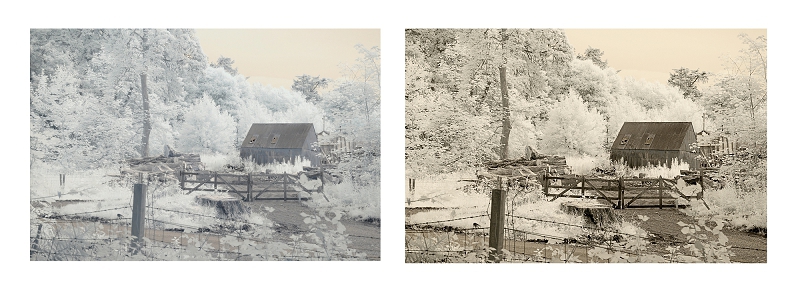
We started month 7 of our pandemic experience with bright sunshine and the determination to get out and about as much as possible! So September 1st saw us driving to Fyvie Castle grounds for fresh air and photo opportunities.
When Mike is driving I usually shoot my ‘drive-bys’ of the countryside as we pass. With today’s smartphones taking such good qualty shots, I often use mine rather than an actual camera! Here we are climbing up the steep hillside out of the howe of the Ythan.
The barley has been harvested, and the fields are ready for hay baling. This croft and the trees on the horizon are a feature of the landscape we see from our house. But I rarely get to catch such a goood, close-up shot! And yes, that angle really is accurate, the hillside is steep!
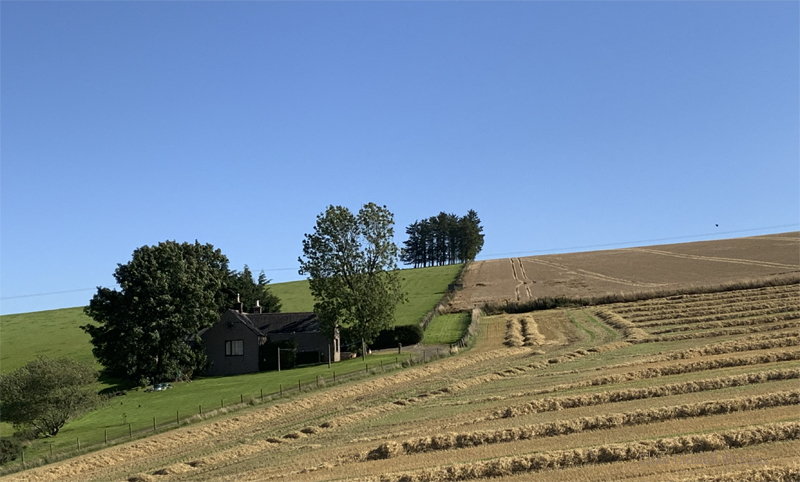
I took an unusual combination of cameras and lenses – an old Eastern European lens, the Meyer Optik (known now as the ‘bokeh monster’) and an old Nikon D90 which has been converted to shoot only in the infrared range. This one has the gentle 720nm filter, and was my very first infrared converted camera, and my way into the whole IR world!
[more about my adventures in IR here]
Trees are a special subject for me, and together with catching the play of light, a great obsession when I am photographing outdoors.
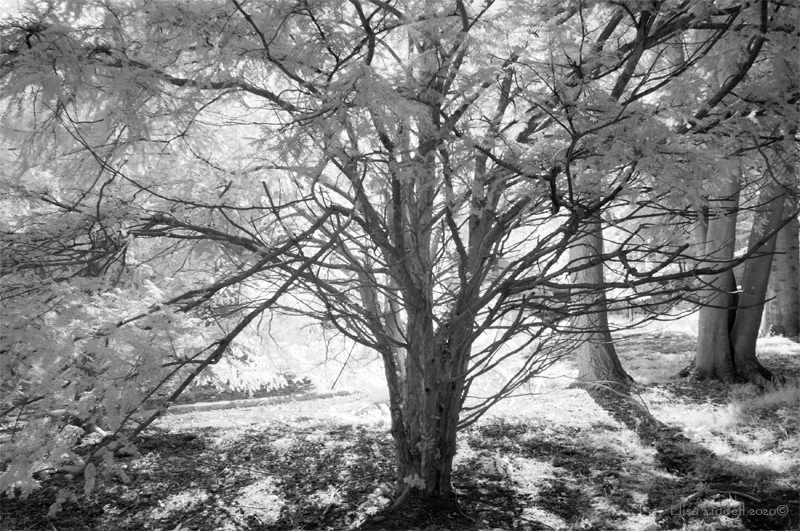
The infrared light range turns the greens of the grass and leaves white, which makes the foliage very delicate, and also makes for a scene that looks like winter!

Branches, tree trunks and tarmac give wonderfully contrasting dark tones. We can walk down this driveway, listening to the pigeons cooing, and the leaves rustling, and the cares of the world seem far away.
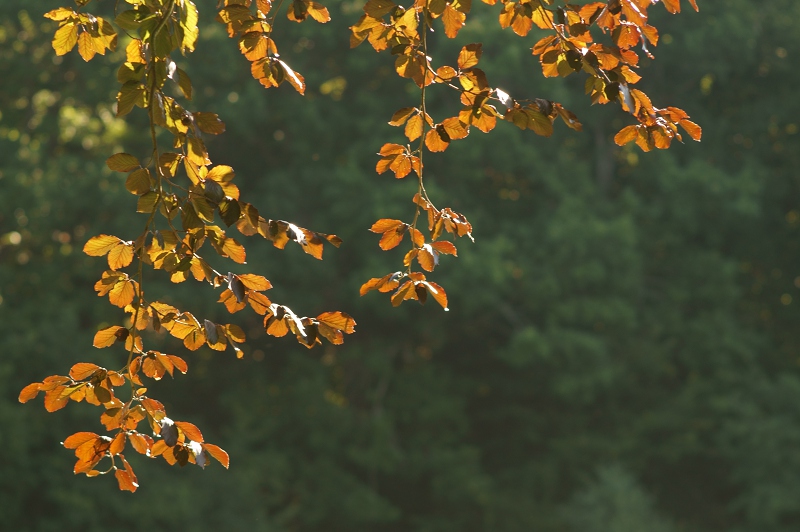
This time in colour, with the heavy Meyer Optik lens. It can really capture the rich colours of the autumn leaves. As September began the autumn colours were just beginning to appear. We had fingers crossed that there would be a sunny dry month ahead, to give us the best of the flaming reds and rich golds as the leaves turned.
And a week later we were back to see how the colours were progressing …

This time with a Canon 70D and another old lens attached – a Russian Helios 44-2. The Canon is not my usual camera – I use mainly Sony. So I struggle with this 70D!
But the views of the loch and the trees are always beautiful and so calming. I think this year, more than before, we value the therapeutic effect of our trips out. Instead of thinking only in terms of exercise and photography, we now find the added value of reducing the stress levels, and refreshing our spirits.
As we picked out more calm days with the promise of sunshine, we went adventuring up the coast twice during September – once to Banff Bay, and then further up the coast to Cullen, both favourite haunts we had missed through the long lock-down months!
We rarely have the luxury of choosing times when the tide is in or out … we need to go in the morning when our energy is ‘in’. By lunch-time it is most definitely ‘out’ and we need to head home for a siesta!
Banff Bay found us enjoying the sand as the sea retreated ……
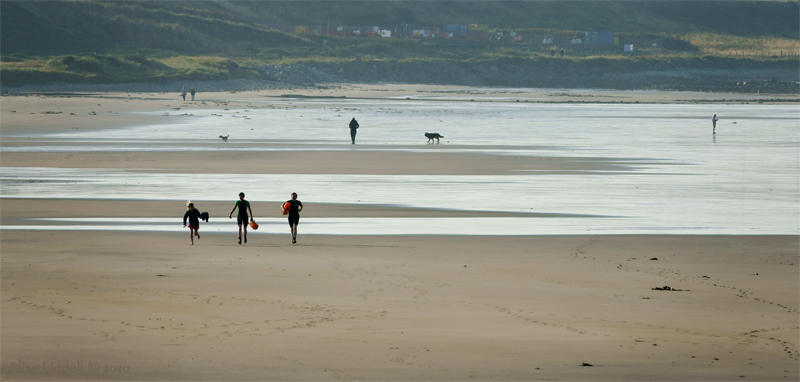
while Cullen found a wild (and very noisy) sea delighting us with crashing waves.
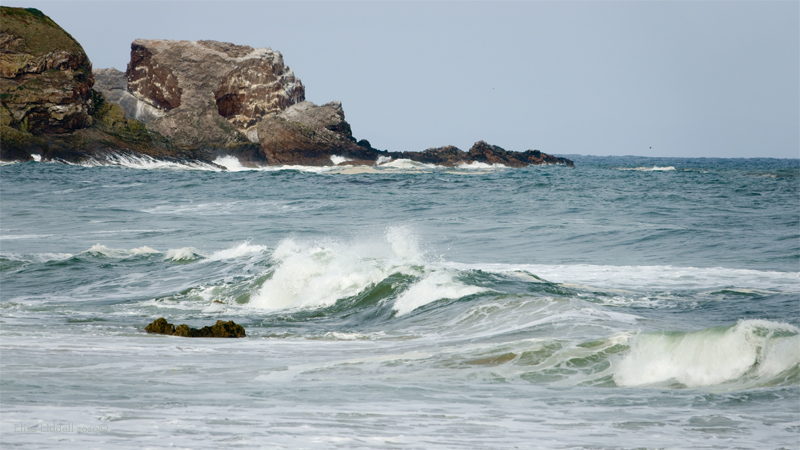
We kept true to our plan, and visited the grounds of Leith Hall twice in September too. It was exactly a year since we were last there! This time entering the Walled Garden we met our first sign of Covid changes, with a one-way system to walk around and a reminder to ‘social distance’. On our second visit we found some of the gates we often use to access the top levels of the gardens were locked. We met almost no other people as we wandered around with our cameras … glad at least, and at last to be able to enjoy the fresh air and the gardens.
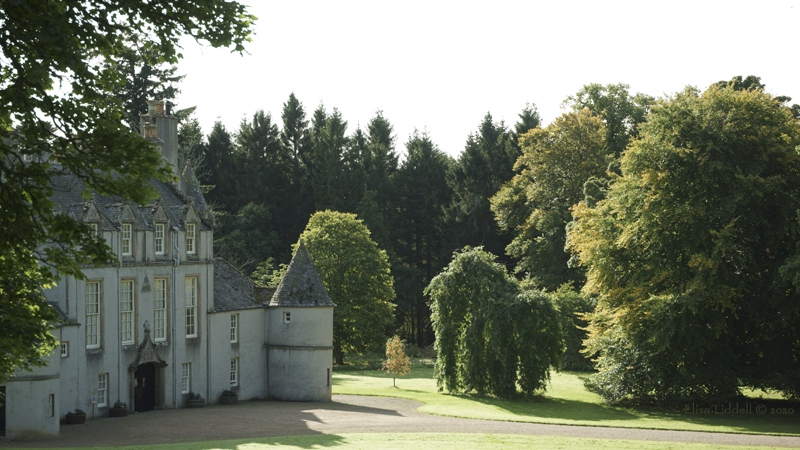
The Hall looks as majestic as ever. I’m not sure if it is open to the public again, but our main delight lies in the tree walks, the flower gardens and the wonderful views.
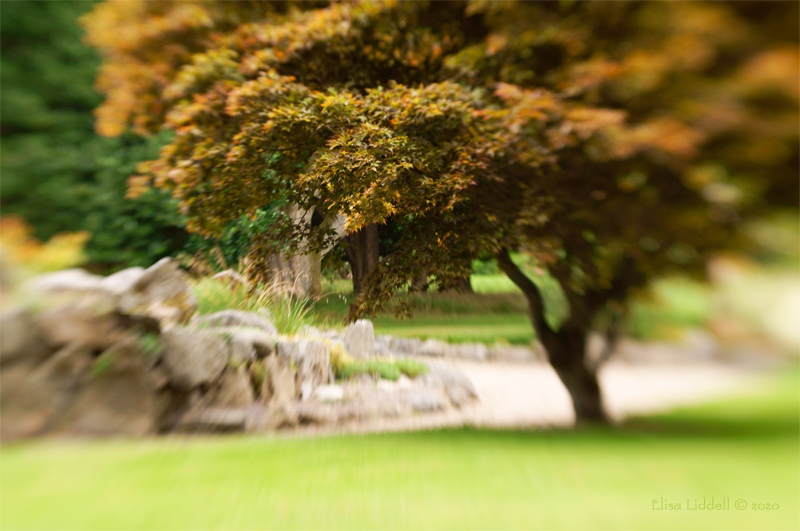
The autumn colours were showing in some of the trees. This one is close to the huge rock garden, which is being rescued, rebuilt and re-planted according to original plans recently found at the Hall.
So September had the feel of sunshine, the outdoors, visits to favourite haunts, and a whole lot of photographs!
But that was not all. At home we had a surprise with the best harvest of plums we’ve had for years.
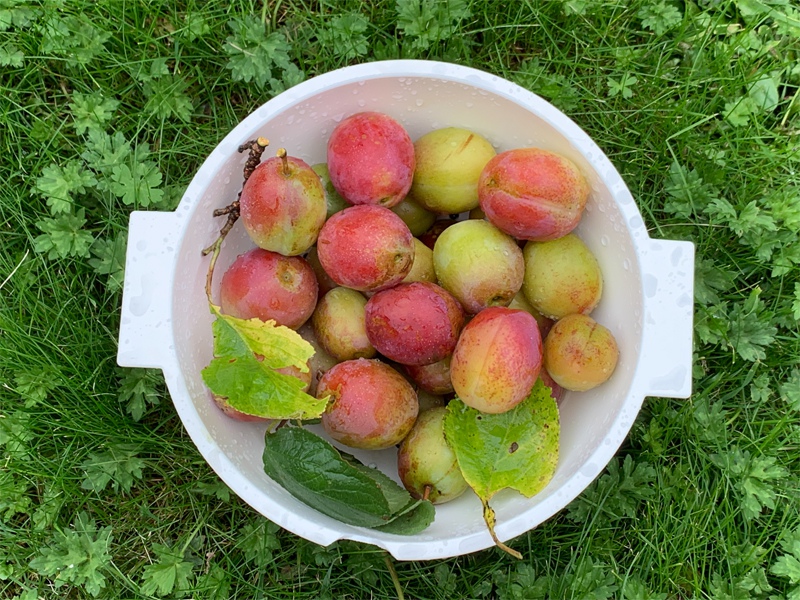
We are aware that the single Victoria plum tree we have is now over 20 years old, and maybe past its best in producing plums. Some years the frosts kill the flowers in Spring, some years there is not enough rain, or too much – not enough sun or too much. So a sudden bumper harvest was a great surprise and delight. Home grown plums, fresh from the tree, taste so good! We collected a bowl like this every day or two for about two weeks.
But of course I can’t look back on September without reference to the pandemic!
This month saw the biggest gamble, as it was decided that schools, colleges and universities had to open again. It began with schools. Here in Scotland we start the school year a few weeks before the rest of the UK, so we were the first to try out opening up our schools, both Primary and Secondary. Personally we looked on with sinking hearts, as young children are notorious spreaders of infections. Is coronavirus so different? And teenagers and college students are the least likely groups to follow the guidelines on social distancing and avoiding crowds! But the ‘science’ said differently … at least in September! But as the month ended there were signs of infection rates picking up. October might prove to be a difficult month!
On to October and autumn arrives.
Back to Journal Page
Back to Notebooks cover
Flickr holds Elisa’s online Photo Gallery
© 2020 Elisa Liddell









